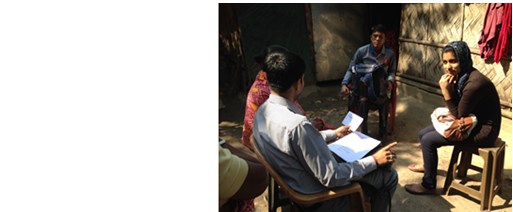A puzzle that remains in the literature on firms and entrepreneurship in low-income economies is that of the ‘missing middle’: the transition of micro-enterprises to Small and Medium Enterprises (SMEs) is largely an absent phenomenon in much of the developing world. Among the growing body of research investigating why these enterprises fail to grow, new evidence is emerging that providing capital or training to a broad base of micro-entrepreneurs may not have lasting impacts on average. This might well be due to the fact that there are heterogeneous returns to entrepreneurship across the different ‘types’ of entrepreneurs and these programs have not been targeting the sub-set of entrepreneurs who are most likely to transition to SMEs given sufficient credit or training.
This project seeks to utilize the strength of existing networks among microcredit clients to identify and target high ability entrepreneurs. Much recent literature focuses on identifying entrepreneurs in developing-country contexts using standard cognitive, personality, and psychometric tests. With this study the authors propose an alternative means of measuring entrepreneurial ability in the developing world context by exploring whether soft information provided by community members, particularly in an environment absent of formal information on entrepreneurial success, can help screen for high growth potential individuals.
The researchers will run a field experiment that randomizes whether microfinance groups receive the standard loan size they were eligible for or loans 25 percent larger than the standard loan in Kolkata, India. The researchers will ask all loan officers and microfinance groups clients to rank, both in absolute and relative terms, their fellow group members on a series of dimensions- entrepreneurial ability, marginal returns, profitability, ability to repay loans, risk aversion, patience, and others. Prior to ranking, the group members will also be cross-randomized into the following treatments: they will either be told or not that the average rankings of group members will be made available to the MFI, and they will either receive incentives or not for how accurate their rankings are as observed ex-post.
The research team will then compare member rankings to the objective measures of each client collected at baseline or endline. Among other things, they will be able to estimate the marginal returns to the newly administered loans to evaluate the value of peer information (as well as alternative networks information) for predicting the growth potential in fellow entrepreneurs. More importantly, the researchers will understand whether group members attempt to “game the system” by ranking their friends higher than deserved and whether rankings can be made more accurate through incentives. The authors will also investigate how this ranking exercise is affected by and in turn affects social interactions between group members.






